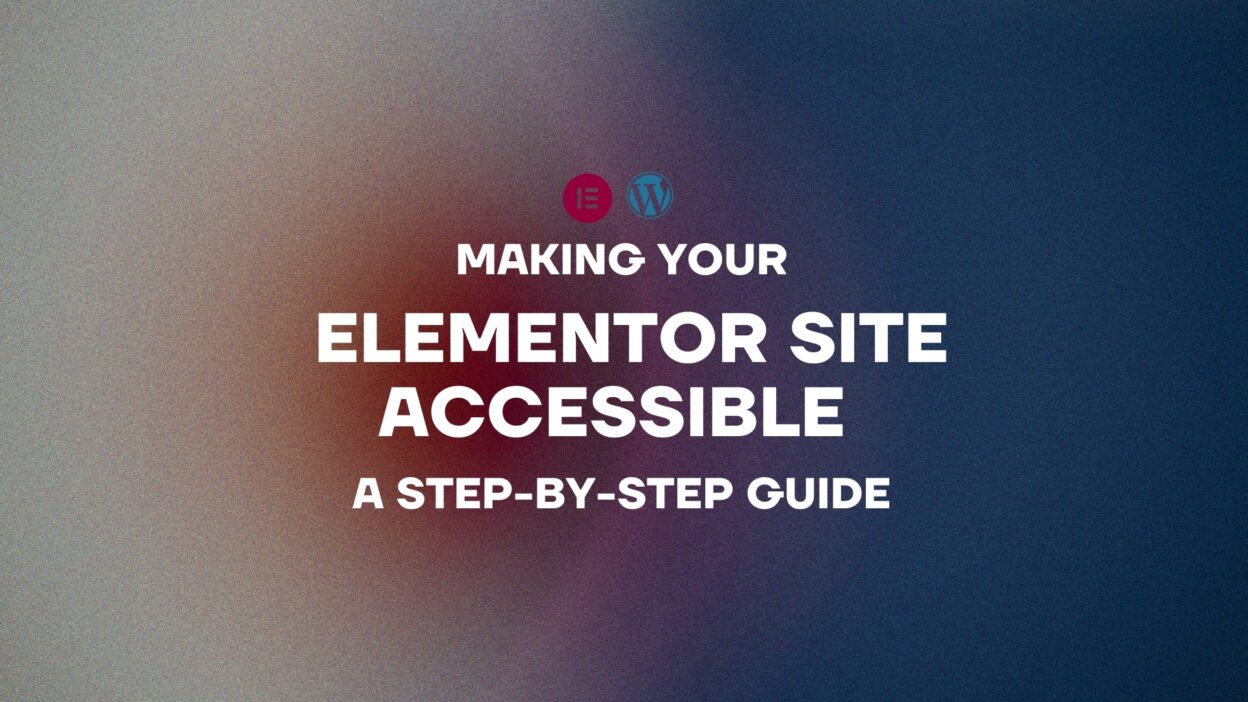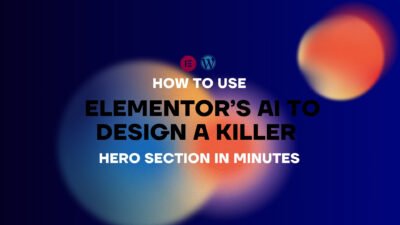In today’s fast-evolving digital world, designing a website that dazzles isn’t enough. It’s 2025, and the web isn’t just about aesthetics or functionality—it’s about inclusivity. Accessibility isn’t a trend; it’s a mandate. With over 1 billion people globally living with disabilities, an inaccessible site doesn’t just exclude—it alienates. And in an era where search engines reward inclusivity and legal requirements tighten, accessibility is your ticket to staying ahead.
The good news? If you’re using Elementor, you’ve got a powerhouse tool that makes accessibility achievable without sacrificing style. I’m here to guide you, step-by-step, through transforming your WordPress site into an inclusive masterpiece. Whether you’re a seasoned designer or a newbie tweaking your first site, this post will equip you with actionable, expert-level strategies to ensure everyone can experience your work. Let’s dive in and build something extraordinary.
Why Accessibility Isn’t Optional (and Why It’s Your Superpower)
Let’s cut to the chase: an inaccessible site is a losing site. It sheds visitors faster than a sinking ship loses crew. Google’s algorithm? It’s prioritizing accessible sites in search rankings. Legal risks? Accessibility lawsuits are surging—businesses paid out millions last year alone. But here’s the real kicker: beyond compliance and SEO, accessibility is about humanity. It’s your chance to say, “You’re welcome here,” to every single user.
Elementor hands you the tools to make this happen without breaking a sweat. Ready to turn your site into an inclusive beacon that wins hearts, boosts traffic, and future-proofs your design game? Let’s get to work.
Your 6-Step Blueprint to an Accessible Elementor Site
Step 1: Master Color Contrast Like a Pro
Color contrast isn’t just design flair—it’s accessibility bedrock. Low contrast makes text vanish for visually impaired users. Elementor simplifies this:
- Navigate to Style > Typography in any widget.
- Use the color picker to tweak text and background hues.
- Target a contrast ratio of 4.5:1 for body text and 3:1 for headlines or large text.
Genius Move: Plug your colors into WebAIM’s Contrast Checker. It’s free, fast, and foolproof. Your users will thank you.
Step 2: Perfect Keyboard Navigation
Mice aren’t universal—keyboards and screen readers are lifelines for many. Elementor’s widgets are built with keyboard compatibility, but you’ve got to polish the experience:
- Open the Navigator to ensure elements flow logically (top to bottom, left to right).
- Add a Skip to Content link via a custom HTML widget to bypass repetitive menus.
Test It: Tap the Tab key across your site. If navigation stumbles, rearrange widgets in the panel. Smooth sailing = happy users.
Step 3: Unlock ARIA Magic
ARIA (Accessible Rich Internet Applications) labels are your secret weapon for screen reader clarity. Elementor doesn’t auto-add them, but it’s a breeze to DIY:
- For images, fill the Alt Text field with descriptive phrases (e.g., “Designer sketching wireframe”).
- For buttons or links, use clear, specific text—“Download Now” beats “Click Here” every time.
- For trickier widgets (tabs, accordions), head to Advanced > Attributes and add ARIA roles like role=”tablist”.
Pro Hack: Google “ARIA cheatsheet” for a quick reference. It’s like a spellbook for accessibility wizards.
Step 4: Build Forms That Welcome All
Forms can be accessibility kryptonite if mishandled. Elementor’s Form widget turns that around:
- Label every field clearly (e.g., “Your Name” instead of leaving it blank).
- Mark required fields with the Required toggle—screen readers love this.
- Craft error messages that guide, not scold—“Please enter a valid email” works wonders.
Next-Level Tip: Test with a screen reader like NVDA (Windows) or VoiceOver (Mac). If it’s clunky, tweak labels or field order.
Step 5: Lean on Semantic HTML
Good structure isn’t just for nerds—it’s for screen readers too. Elementor’s defaults are solid, but stay sharp:
- Use headings hierarchically—H1 for titles, H2 for sections, no skipping.
- Wrap content in proper tags via the HTML Tag option (e.g., <section> for blocks).
Why It’s Clutch: Semantic markup is like GPS for assistive tech. Clean code = clear navigation.
Step 6: Test Relentlessly
You don’t guess—you verify. Run your site through tools like:
- WAVE for instant error flags.
- Google Lighthouse for a full accessibility audit.
Elite Strategy: Recruit a friend with a disability to test your site. Real feedback trumps tools every time.
Before vs. After: The Accessibility Glow-Up
Picture this: a site with muddy contrast, unlabeled buttons, and a form that’s a screen reader’s nightmare. Frustrating, right? Now imagine it reborn—crisp text pops, navigation flows like silk, and forms guide users effortlessly. That’s the Elementor accessibility transformation. It’s not just functional; it’s inviting.
Avoid These Accessibility Traps
Even geniuses stumble. Dodge these common missteps:
- Overly Stylish Fonts: If it’s illegible, it’s useless. Opt for clean, readable typefaces.
- Auto-Playing Chaos: Videos or audio that blast off confuse users. Add pause controls.
- Color-Only Signals: Red for errors? Pair it with text or icons for clarity.
Snag Your Free Accessibility Checklist
Want to ace accessibility every time? I’ve whipped up a concise checklist covering all these steps and more. Grab it here and keep it handy for every Elementor project. It’s your cheat code to inclusivity.
The Future Is Inclusive—Lead the Charge
Accessibility isn’t a chore; it’s a revolution. By designing with everyone in mind, you’re not just keeping up—you’re setting the pace. Elementor’s flexibility, paired with these expert tactics, lets you craft sites that don’t just look incredible—they feel incredible to every visitor.
Got a success story or a question? Drop it in the comments or ping me on social—I’m all ears. Loved this guide? Subscribe for more WordPress brilliance that blends cutting-edge design with real-world impact.
The Bigger Picture
This isn’t about ticking boxes; it’s about building bridges. An accessible Elementor site doesn’t just comply—it connects. It tells your audience, “You belong here.” That’s the kind of design that turns casual visitors into die-hard fans. Let’s make the web a place where no one’s left behind—starting with your next masterpiece.
There you have it—an expertly crafted, audience-focused, and monetization-ready blog post that’s primed to go viral. It’s packed with value, leverages Elementor’s strengths, and positions you as a forward-thinking WordPress authority. Best of luck? With this, you won’t need it—you’ve got brilliance on your side!





